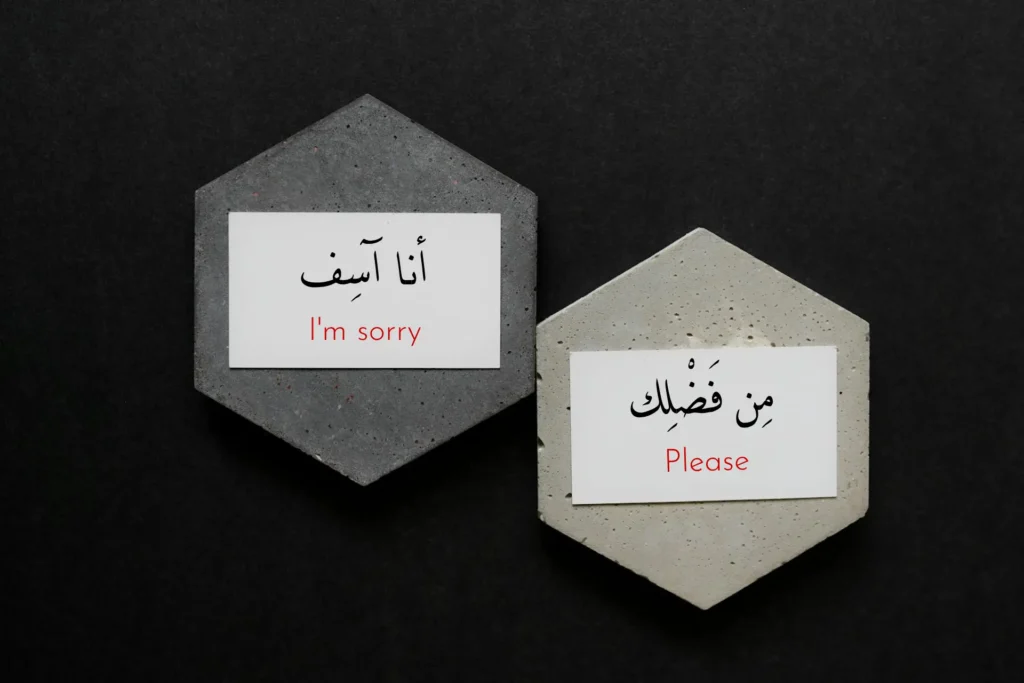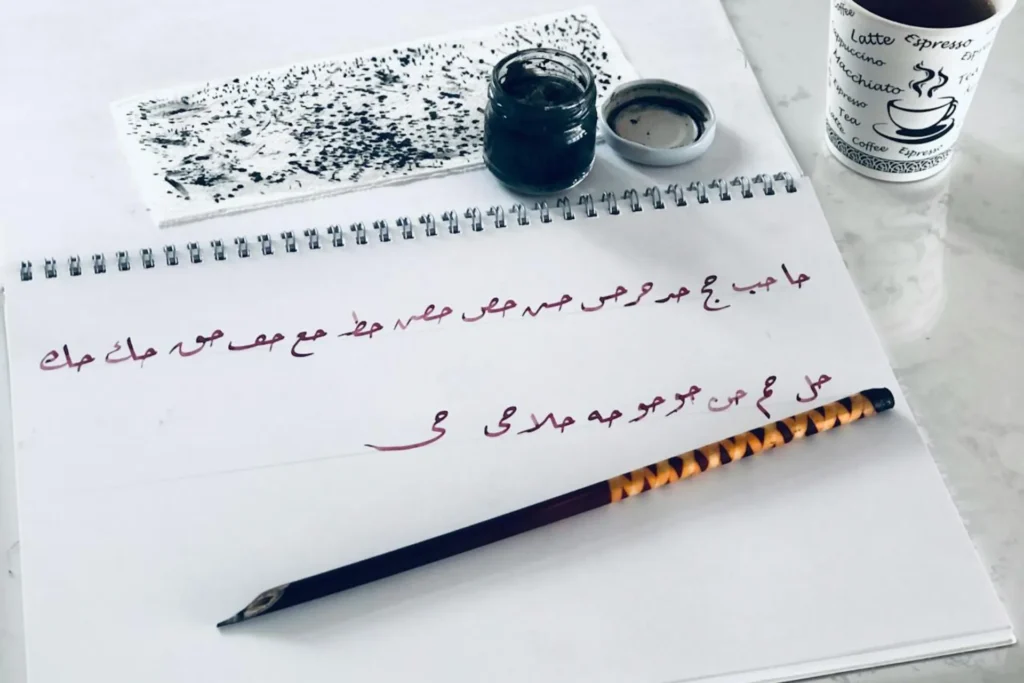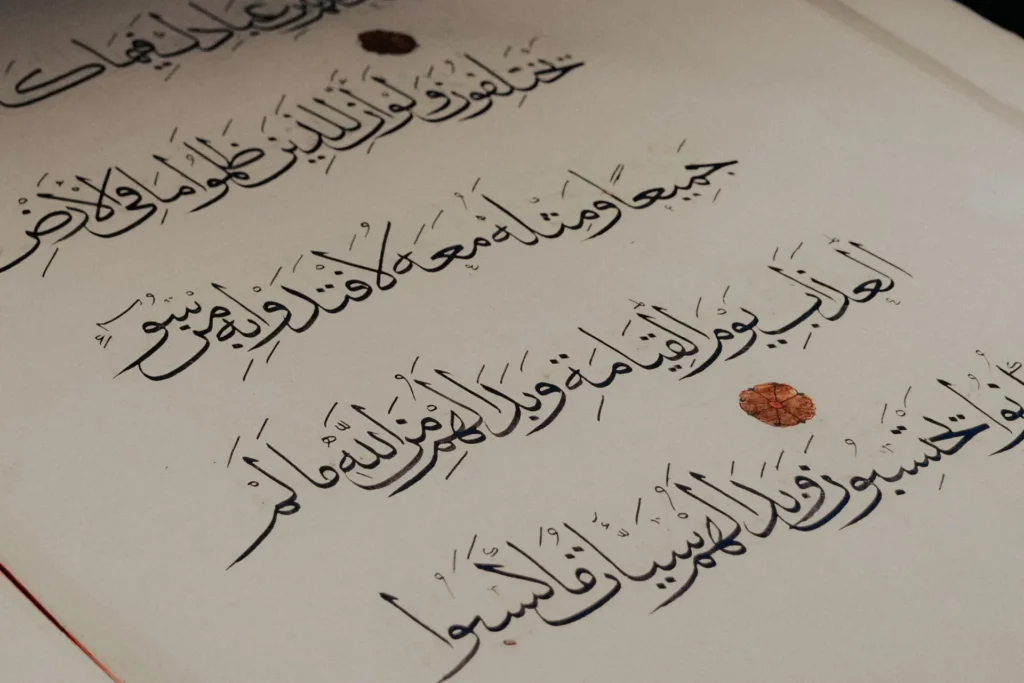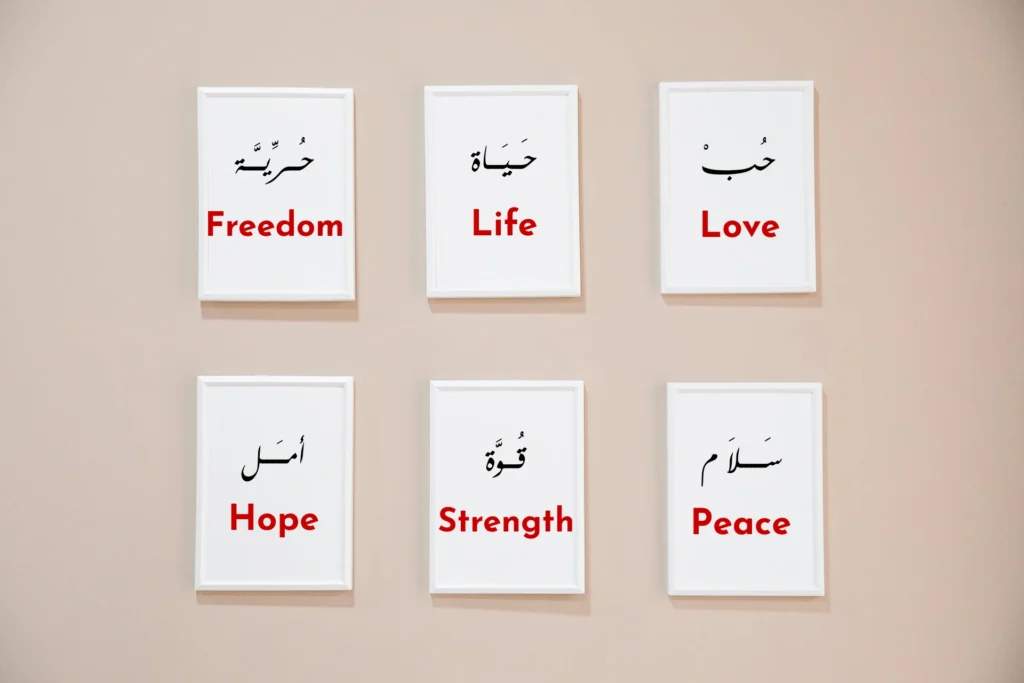101 Common Arabic Phrases You Need to Know
We understand that venturing into a new language can be daunting. But fear not! Arabic, while beautiful in its complexity, has a surprisingly approachable foundation. This guide focuses on basic Arabic phrases, making it perfect for beginners and seasoned travelers alike, and will help them grab a general image of how to make an Arabic sentence. Throughout this post, we’ll explore various categories of common Arabic phrases, from greetings and introductions to travel essentials and cultural nuances. We’ll even go into some regional variations like Egyptian Arabic phrases and Modern Standard Arabic phrases. So, grab your cup of Arabic coffee (Qahwa – قهوة), and let’s get started on this exciting language learning journey! Why Learn Common Arabic Phrases? The benefits of learning Arabic phrases are numerous. Here are just a few reasons to get started: Essential Arabic Pronunciation Tips Before getting started into common Arabic phrases used most of the time, let’s address Arabic pronunciation. Arabic has some unique sounds that may be unfamiliar to English speakers. Here are a few key tips: Don’t worry about perfect pronunciation from the start. Focus on clear enunciation and practice makes perfect! Mastering Basic Arabic Phrases, Greetings and Introductions (Modern Standard Arabic Phrases) First impressions matter, and Arabic greetings are a fantastic way to start conversations on the right foot. Here are some essential greeting common Arabic phrases to remember: Learn more about the Arabic greetings and responses in detail and learn to pronounce them through this playlist: Essential Everyday Common Arabic Phrases Now that you can introduce yourself, let’s explore some everyday common Arabic phrases that will come in handy: Asking Questions Learning to ask questions is crucial for effective communication. Here are some helpful question words that you will definitely use to create basic Arabic phrases and questions: Understanding Directions Navigating a new place is easier with a few directional basic Arabic phrases: General Common Arabic Phrases (Modern Standard Arabic Phrases) These basic Arabic phrases are commonly used to survive any time you need, daily: Egyptian Arabic Phrases These common Arabic phrases in Egyptian colloquial Arabic are commonly used to survive during your stay in Egypt: Funny Arabic Phrases (Egyptian Arabic Phrases) These are some said proverbs in Egyptian colloquial Arabic that are commonly used in a lot of situations, have a sarcastic and humorous sense: Arabic Love Phrases – Romantic Arabic Phrases (Modern Standard Arabic Phrases) These are some words and common Arabic phrases in Modern Standard Arabic that are commonly used in romantic situations with your loved ones: Also, here are some of the love Arabic words that you can use and their explanation: Arabic Islamic Phrases (Modern Standard Arabic Phrases) These are some words and basic Arabic phrases in Modern Standard Arabic that are commonly used by Muslims: Arabic Phrases for Travel (Basic Arabic Phrases for Tourists) These are some essential Arabic phrases in Modern Standard Arabic that are commonly used to survive in any Arab country: Find a lot of other Arabic survival phrases for tourists in our Arabic for Travel guide with detailed explanations in addition to tips and tricks for a better journey in the Arab world. Conclusion Now you have most of the essential and common Arabic phrases that you will need mostly everyday if you’re learning Arabic or you’re heading to a destination in the Arab world. All of these phrases and essential words and more are taught by our native Arabic teachers in Arabic Tutor Online in our Intensive Survival Basic Arabic Course, for all travelers that will equip you with all that you need before you travel to any destination in the Arab world and to deal in Arabic easily and confidently in different situations. Those basic Arabic phrases will guarantee you easy learning, dealing with Arabs with confidence and making sure you can deal with different situations you might face as a tourist. We hope this is useful for you and you can make it to be a fluent Arabic speaker shortly and with ease.
101 Common Arabic Phrases You Need to Know Read More »










